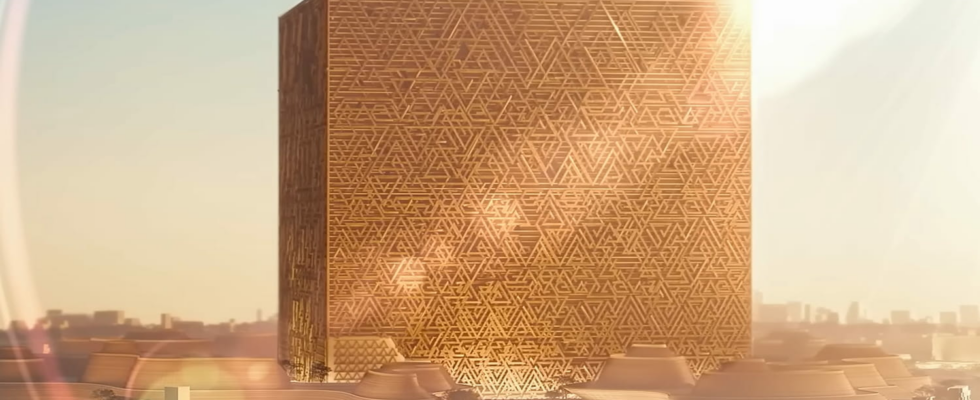This country wants to build the largest building in the world, which will ultimately house no less than 400,000 people. A real city concentrated in a cubic building 400 m high.
Architecture and urban planning have always been issues of power and demonstrations of force. From the pyramids of ancient Egypt to the skyscrapers of New York, the greatest constructions have often been erected to mark history and assert the power of a nation, kingdom or empire. This tradition continues today with a project of unprecedented scale: the construction of the largest building in the world.
And not just any monster: a cubic monster measuring 400 meters on each side. Even higher than the Eiffel Tower (312 m), this megastructure will be much more than a simple building. Designed to be a true vertical city, it will be home to thousands of residences, luxury hotels, shopping centers, cultural spaces and leisure venues. Its designers even promise a unique immersive experience, with holographic projections on the facades of the cube.
The country at the origin of this pharaonic project is Saudi Arabia, an immensely rich Gulf petro-monarchy, which has been multiplying Herculean urban planning programs for several years, under the leadership of its leader, Crown Prince Mohammed. bin Salman. This disproportionate cube, called the Mukaabis part of this dynamic of transformation and diversification of the kingdom’s economy, which seeks to become less dependent on oil and to position itself as a major player in global tourism.
Alongside this Dantesque cube, Saudi Arabia also unveiled another equally astounding urban project in 2017: The Line. This futuristic city, designed to accommodate no less than nine million inhabitants in the middle of the desert, will take the form of two parallel building blocks, 170 kilometers long and 500 meters high. Its exterior walls will be entirely reflective, its operation largely automated and all its internal systems powered by renewable energy.
If these unusual architectural and urban projects are fascinating from a technical point of view, they obviously raise many questions… and criticism. What will be the environmental impacts of these gigantic constructions? How to finance such works? Above all, what will be the real habitability for human beings and the long-term viability of these hyper-technological cities cut off from any organic environment? And even, will these projects simply come to an end one day?
These two constructions are part of a major program for the transformation of the country, the Saudi Vision 2030. As its name indicates, this major national plan has the temporal objective of the year 2030, that is to say in barely five small years. However, to date, the city The Line, launched in 2017, is already seriously behind schedule, and only a few kilometers of urban strip would be delivered in 2030, out of the 175 originally planned. As for the giant Mukaab cube, which has just been announced, it is difficult to imagine how such a project could be completed in such a short window of time.
